Ettore Sottsass: Un piccolo omaggio a Mondrian
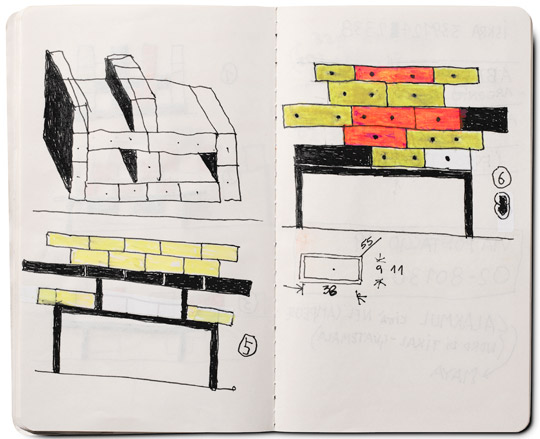
This may be the last series of furniture that Ettore Sottsass ever designed before his death in 2007 but he instilled it with the same burst of colour and energy that defined his prolific career. Produced in editions of just six, the cabinets are now on show for the first time at Friedman Benda gallery in New York.
The Italian designer (1917 - 2007) never went in for pared-down design. 'When I was young, all we ever heard about was functionalism, functionalism, functionalism,' he once said, referring to the rationalist doctrine of his architect father, Ettore Sottsass Snr. 'It's not enough. Design should also be sensual and exciting.'
This mantra was encapsulated in his seminal 'Valentine' portable typewriter for Olivetti in 1969, made from bright red plastic with vivid orange spools. By going beyond ergonomics and understanding people's need to attach emotions to their possessions, the designer turned a piece of office equipment into a covetable object.
In the 1981, Sottsass co-founded design collective Memphis - along with the likes of Matteo Thun and Andrea Branzi - whose use of bright colours, kitsch suburban motifs and cheap materials, such as plastic laminates, flew in the face of conventional notions of good taste, yet earned them international acclaim and spawned an entire design movement.
The designer quit Memphis in the mid-1980s to found Sottsass Associati, whose primary focus was (and still is) architecture. During his lifetime, its projects spanned from a private home for David Kelly to commercial projects for Apple, but Sottsass continued to produce small lines of glass, ceramics and furniture on the side.
His final 'Piccolo Omaggio a Mondrian' cabinets show his customary disregard for the boundaries between artistic disciplines, rolling furniture, architecture and sculpture into one. While paying a strong tribute to the geometry of Piet Mondrian's paintings, the designs rework the De Stijl master's use of colour to eye-popping effect.
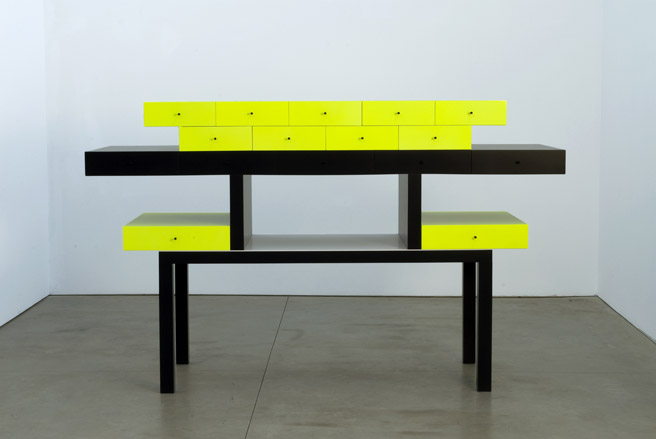
'Omaggio 2' by Ettore Sottsass, 2007. courtesy of The Gallery Mourmans and Friedman Benda
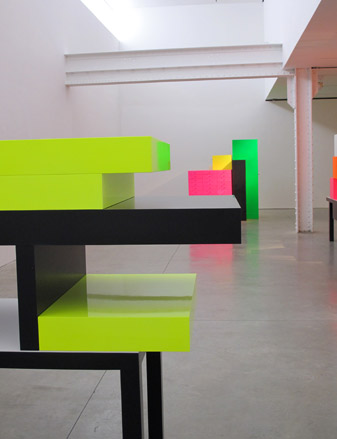
Like all of the pieces in the collection, 'Omaggio 2' is made from Corian and wood.
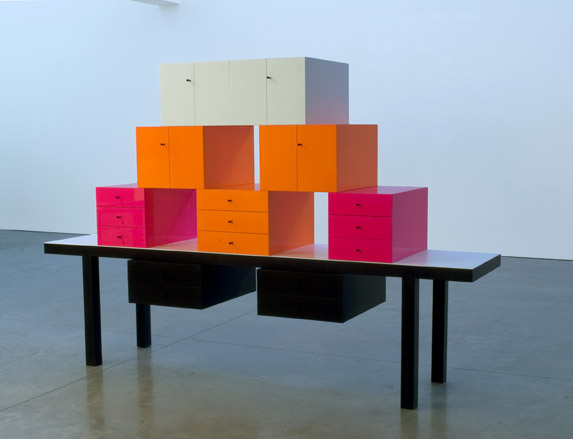
'Omaggio 7' by Ettore Sottsass, 2007. courtesy of The Gallery Mourmans and Friedman Benda
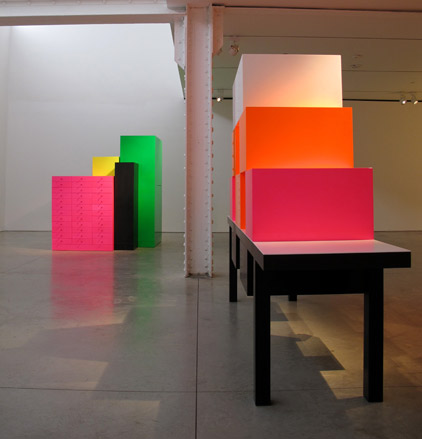
Side view of 'Omaggio 7' by Ettore Sottsass, 2007.
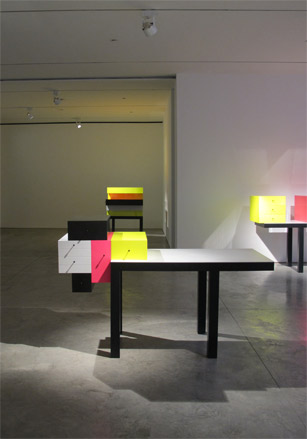
'Omaggio 4' by Ettore Sottsass, 2007.
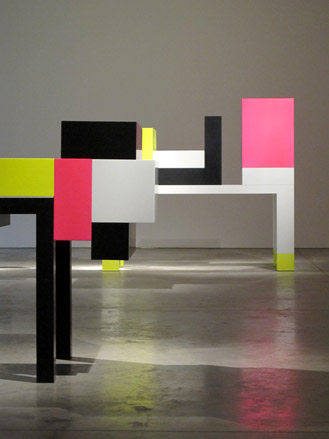
Each cabinet in the collection is produced in an edition of six.
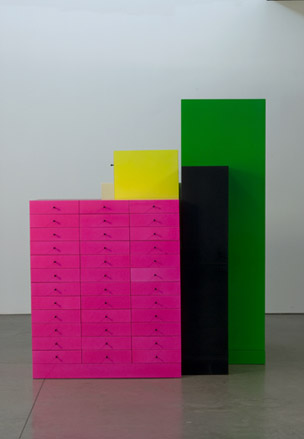
'Omaggio 3' by Ettore Sottsass, 2007. Courtesy of The Gallery Mourmans and Friedman Benda
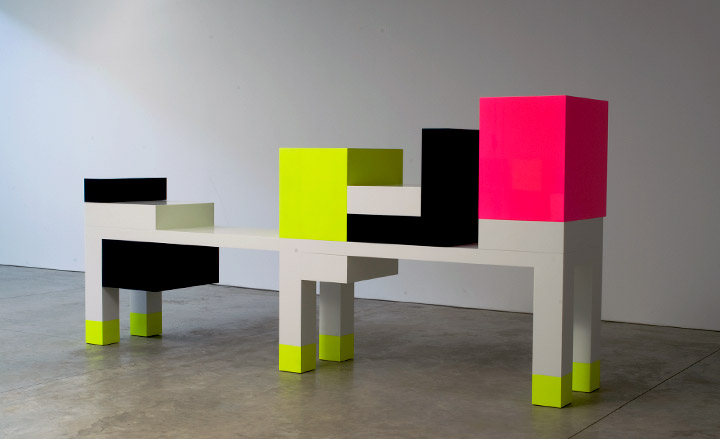
Back view of 'Omaggio 5' by Ettore Sottsass, 2007. Courtesy of The Gallery Mourmans and Friedman Benda
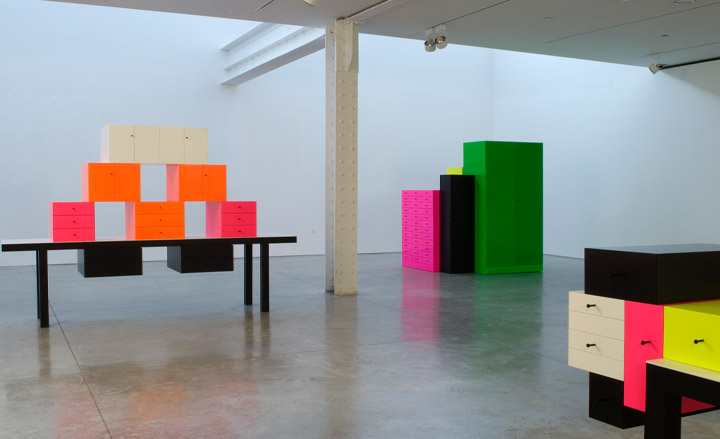
From left: 'Omaggio' 3, 7 and 4 by Ettore Sottsass, 2007. Courtesy of The Gallery Mourmans and Friedman Benda
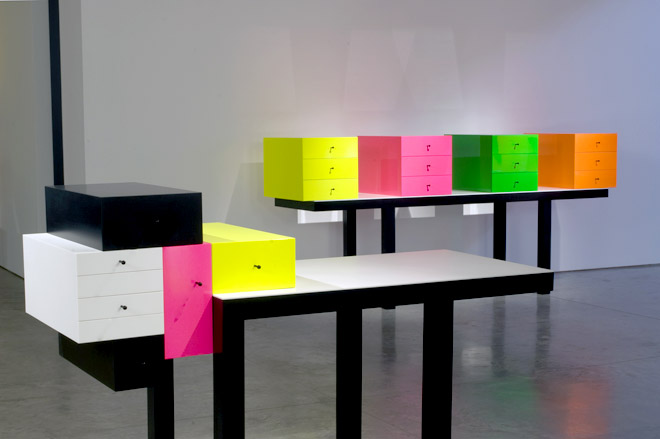
'Omaggio 4' by Ettore Sottsass, 2007. Courtesy of The Gallery Mourmans and Friedman Benda
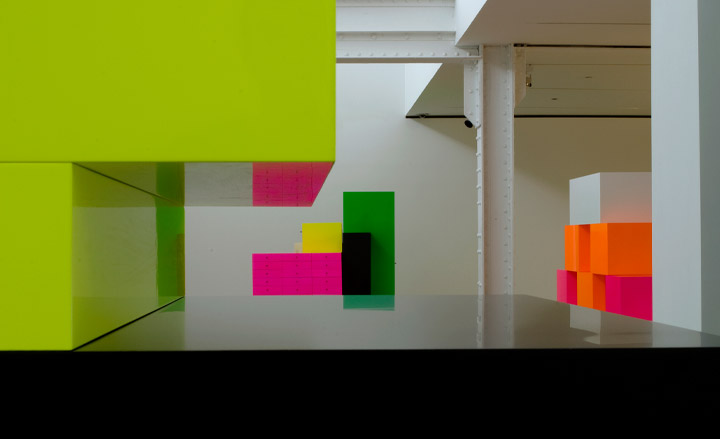
The 'Omaggio' series of cabinets was Sottsass' last furniture collection before his death. Courtesy of The Gallery Mourmans and Friedman Benda
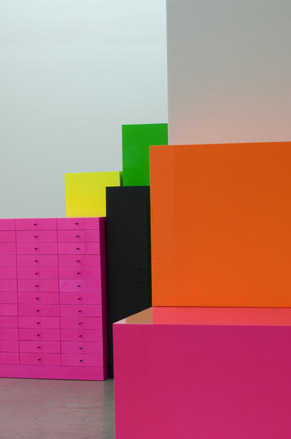
From left: 'Omaggio 3' and 'Omaggio 7' by Ettore Sottsass. Courtesy of The Gallery Mourmans and Friedman Benda
ADDRESS
Receive our daily digest of inspiration, escapism and design stories from around the world direct to your inbox.
Friedman Benda
515 West 26th Street
New York NY 10001
Malaika Byng is an editor, writer and consultant covering everything from architecture, design and ecology to art and craft. She was online editor for Wallpaper* magazine for three years and more recently editor of Crafts magazine, until she decided to go freelance in 2022. Based in London, she now writes for the Financial Times, Metropolis, Kinfolk and The Plant, among others.
-
 Usher opens up about breakfast playlists, banana pudding and why a glass tumbler is always on his rider
Usher opens up about breakfast playlists, banana pudding and why a glass tumbler is always on his riderOn the heels of a collaboration with Baccarat, the Grammy-winning singer-songwriter breaks down his entertaining tips. 'Hosting is an expression of how you feel about your guests and also who you are.'
-
 The beauty trends that will define 2026, from ultra-niche fragrances to anti-ageing dental care
The beauty trends that will define 2026, from ultra-niche fragrances to anti-ageing dental careAs we enter the new year, we speak to experts in fragrance, skincare, aesthetics, wellness and more about the trends that will be shaping the way we look
-
 The most stylish hotel debuts of 2025
The most stylish hotel debuts of 2025A Wallpaper* edit of this year’s defining hotel openings. Design-led stays to shape your next escape